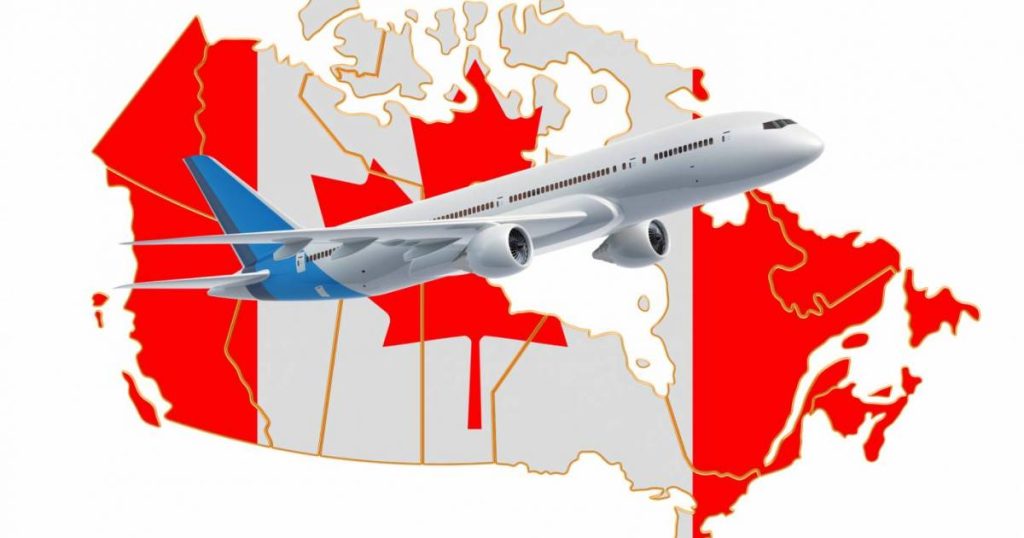Are you dreaming of exploring the breathtaking landscapes of Canada or immersing yourself in its vibrant cultural scene? Well, pack your bags and get ready for a deep dive into the specifics of Canadian Temporary Resident Visas and eTAs! Whether you’re planning a short visit or a longer stay, this blog post will unravel all the essential information you need to know about these travel documents. From understanding the differences between them to demystifying their application process, we’ve got you covered every step of the way. So grab a coffee, sit back, and let’s embark on this exciting journey together! CANADA VISA ETA TYPES
Introduction to Canadian Temporary Resident Visas and eTAs
If you are planning to visit Canada, it is important to know the entry requirements for temporary residents. Depending on your nationality, you may need a Temporary Resident Visa or an Electronic Travel Authorization (eTA) before you can enter the country. In this section, we will provide an overview of these two types of visas and explain their purpose.
Temporary Resident Visa (TRV)
A Temporary Resident Visa is a document that allows foreign nationals to travel to Canada for a specific period of time. This visa is typically required for visitors, students, and workers who are not from visa-exempt countries. It is usually valid for up to six months but can be issued for longer periods depending on the individual’s purpose of travel.
To apply for a TRV, individuals must meet certain eligibility criteria set by Immigration, Refugees and Citizenship Canada (IRCC). These include having a valid passport, being in good health and financial standing, having no criminal record or immigration violations, and providing proof of ties to their home country such as employment or family ties.
Once approved, the TRV will be placed in the applicant’s passport as a stamp or sticker indicating their authorized length of stay in Canada. It is important to note that possessing a TRV does not guarantee entry into Canada; border officers have the final say on whether an individual can enter the country based on various factors such as admissibility and purpose of visit. CANADA VISA REQUIREMENTS
Understanding the Different Types of Temporary Resident Visas
When planning a trip to Canada, it is important to understand the different types of temporary resident visas that are available. Temporary resident visas allow foreign nationals to enter and stay in Canada for a limited period of time for various reasons such as tourism, business, or study. In this section, we will discuss the three main types of temporary resident visas: visitor visa, work permit, and study permit.
Visitor Visa:
A visitor visa is also known as a tourist visa or a temporary resident visa (TRV). This type of visa allows individuals to enter Canada for tourism purposes or to visit family and friends. It is typically issued for up to six months but can be extended depending on the individual’s circumstances. A visitor visa may also allow the holder to engage in short-term studies or attend business meetings while in Canada.
Work Permit:
A work permit allows foreign nationals to work in Canada temporarily. It is generally issued for 1-3 years and can be renewed if needed. To obtain a work permit, an individual must have a job offer from a Canadian employer who has obtained a positive Labour Market Impact Assessment (LMIA) from Employment and Social Development Canada (ESDC). The LMIA process ensures that there are no qualified Canadians available for the job before hiring a foreign worker.
There are two main categories of work permits: employer-specific work permits and open work permits. An employer-specific work permit limits the individual’s employment to one specific employer while an open work permit allows them to work for any employer
What is an eTA?
An eTA, or Electronic Travel Authorization, is an entry requirement for visa-exempt foreign nationals who are traveling to Canada by air. This electronic document was implemented by the Canadian government in 2015 as a method of pre-screening visitors before they board their flight to Canada.
The purpose of an eTA is to enhance border security and facilitate the travel process for eligible individuals. It allows the Canadian government to conduct background checks on travelers before they arrive in Canada, ensuring that only low-risk individuals are granted entry. This helps identify any potential security or health risks prior to arrival, allowing authorities to take necessary precautions if needed.
Travelers from certain countries do not require a visa to enter Canada, but they still need an eTA. These countries include Australia, United Kingdom, Japan, New Zealand, and many others (the full list can be found on the Government of Canada website). Citizens from countries that require a visa must obtain one instead of an eTA.
Applying for an eTA is relatively simple and can be done online through the official Government of Canada website or through third-party websites authorized by Immigration, Refugees and Citizenship Canada (IRCC). The application process includes filling out personal information such as name, date of birth, passport details, and answering eligibility questions related to criminal history or medical conditions.
How to apply for an eTA
If you are planning to travel to Canada in the near future, you may need to apply for an Electronic Travel Authorization (eTA). This is a mandatory document for visa-exempt foreign nationals who are entering Canada by air. The eTA allows visitors to stay in Canada for up to six months at a time and is valid for five years or until your passport expires, whichever comes first.
To make the process easier for you, we have put together a detailed guide on how to apply for an eTA:
Step 1: Determine if you need an eTA
The first step in applying for an eTA is determining whether or not you actually need one. Citizens of visa-exempt countries such as the United States, Australia, and Japan do not require an eTA. However, citizens of countries that require a temporary resident visa (TRV) also need an eTA. You can use the Government of Canada’s online tool to check if your country requires an eTA.
Step 2: Gather required documents
Before starting your application, make sure you have all the necessary documents ready. These include:
– A valid passport from a visa-exempt country with at least six months validity from your planned date of entry into Canada.
– A credit card or debit card to pay the application fee.
– An email address where all correspondence regarding your application will be sent.


